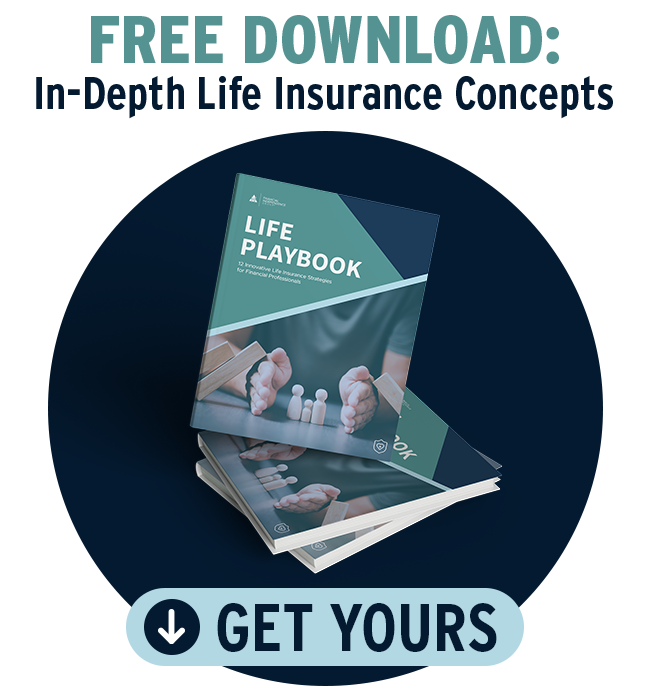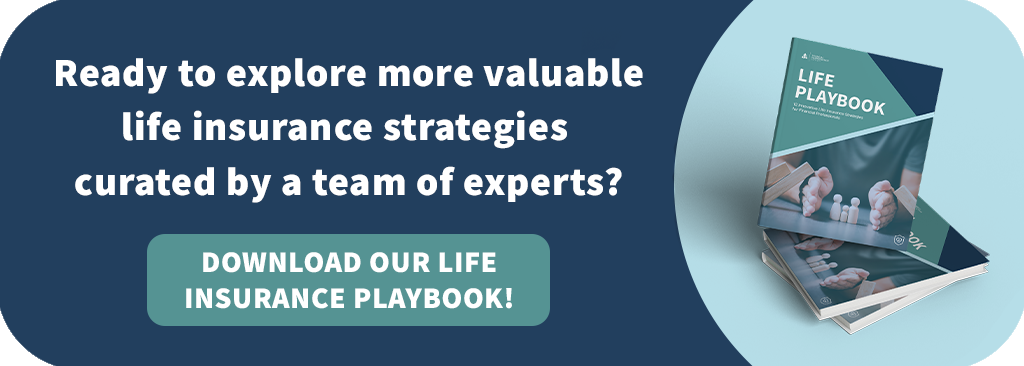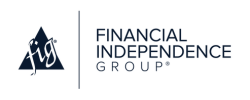Updated August 7, 2024, at 1:30 PM
Loans from cash value life insurance can provide tax-free income if the policy isn’t a modified endowment contract (MEC) and stays in force until death.
Income will vary depending on many factors, including crediting rates, loan rates, insurance costs, and the type of loan or loan features the policy has associated with it.
When you take a loan against an in-force policy, you’re not withdrawing the money from the policy itself. You’re taking a loan that the carrier is issuing to you and the carrier is using your policy cash value as collateral.
Any policy loan will also reduce the net death benefit. The loan may have a level interest rate or a variable interest rate. The policy may also allow for the cash value that secures the loan to remain invested in index segments, while other policies may require the cash value securing the loan to be moved into a fixed account.
Fixed Account Loans
These loan types require the policy cash value that’s securing the loan amount to be moved out of any indexed segments and into a fixed account.
Carriers determine two rates associated with fixed loans: the loan interest rate and the fixed account crediting rate. The loan interest rate is the carrier’s rate on the money they loan you. The fixed account crediting rate is the interest rate the carrier credits to the money held in the fixed account as collateral for the loan.
Many policies will have a “wash loan rate” after about ten years where these two rates are equal, but not all policies offer this provision or guarantee this.
Related: IUL vs. GUL: Which Makes the Most Sense?
Example
Look at an example with an indexed universal life policy with a level death benefit of $300,000 and a cash value of $200,000.
Here’s what happens with a $100,000 fixed loan at a 5% interest rate and 5% crediting rate for a net-zero cost “wash loan” over a one-year period prior to policy charges being accounted for. Remember, not all policies may offer a wash loan provision:
- $100,000 in cash value securing the loan adds on $5,000 in credits = $105,000 in fixed account
- Assume the other $100,000 in cash value is credited 7% from earnings from its index segment—this $100,000 also adds on $7,000
- The combined cash value of $212,000 – the loan balance of $105,000 = net cash value of $107,000
- The death benefit 0f $300,000 – the loan balance of $105,000 = net death benefit of $195,000
Participating or Leveraged Loans
These loans differ from fixed account ones in that the policy value securing the loan amount doesn’t have to move out of any index strategies it’s allocated to. The realized crediting rate can be greater than the loan interest rate charged, and therefore, can create leverage.
However, the crediting rate can be lower than the loan interest rate in down years. The carrier’s loan rate with a participating or leveraged loan can be either guaranteed at a level rate or a variable loan rate that’s tied to an index or treasury and may have a maximum rate it can’t go above.
Example
For this sample case, let’s assume the loan rate for a leveraged loan is 5%. If the crediting rate earned by the index is 5%, then the results would be the same as the previous fixed rate loan example.
If the policy has a 7% cap and hits that cap in a given year, here’s how the leveraged loan would work prior to any policy charges being accounted for:
- $100,000 loan adds on $5,000 in loan interest at 5% = $105,000 loan balance
- $200,000 in cash value at 7% adds on $14,000 in credits = $214,000 cash value
- Net of the loan balance, the net cash value is $109,000
- The net death benefit is $195,000
Related: A Look at IUL Fees, Costs, & Illustration Manipulation
If the realized index return is 0% in a given year, the net cash value is $95,000 based on $200,000 – $105,000. The net death benefit is $195,000.
The 0% scenario is a -5% loss to policy cash value due to the negative leverage.
Conclusion
Names used for leveraged loans include index, variable, alternate, and participating loans.
Illustration regulations currently limit non-guaranteed projections to 50 bp of leverage between the index crediting rate and the illustrated loan interest rate. Actual leverage can be much higher but also can be negative with significant net losses.
Since illustrations typically use a level projected credit rate in all future years, they don’t reflect the up and down years that’ll occur relative to the projected rate.
An illustration run at 6% assumes 6% will be earned each year while actual performance may vary between the policy’s floor and cap rate each year. It’s recommended that in-force illustrations periodically be run to reflect the desired goals of the policy.
Keep Reading: F&G Trailsetter℠ & the Future of Life Insurance Compensation
For Financial Professional Use Only
The content within this post is for educational purposes only and does not represent legal, tax, or investment advice. Customers should consult a legal or tax professional regarding their own situation. This presentation is not an offer to purchase, sell, replace, or exchange any financial product. Insurance products and any related guarantees, features, and/or benefits are backed by the claims-paying ability of an insurance company. Insurance policy applications are vetted through an underwriting process set forth by the issuing insurance company. Some applications may not be accepted based upon adverse underwriting results.



